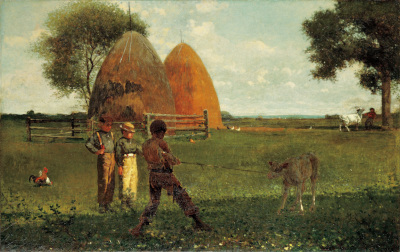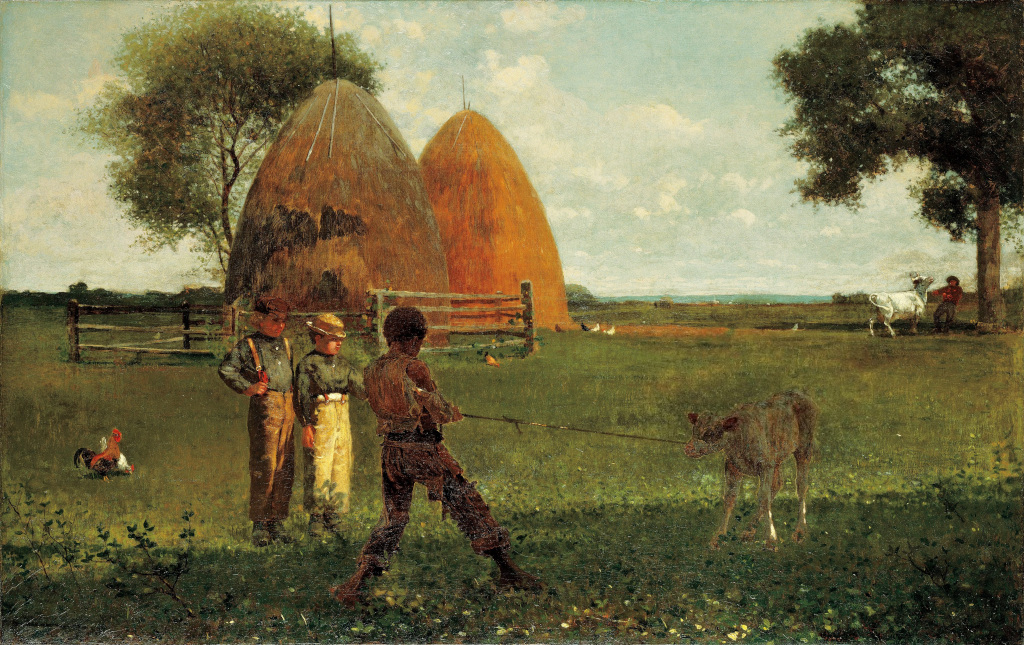This charming scene was produced by Winslow Homer in 1875, which was fairly early on in his career. It would only be later that his seascapes would start to dominate his oeuvre, and so in the 1870s he was still very much evolving as an artist.
The composition in front of us here features a scene from rural life which would have appealed to Americans after the recent horrors of the civil war. Many artists switched to positive themes such as this in order to take attention away from a serious period in the nation's history. Many saw art as a means to escape from such memories, even though many felt them so fresh at that time. We see here a young man attempting to control a calf which is on the other end of a piece of rope. It stubbornly refuses the boy's request and leans backwards in defiance. Two adults look on in amusement, enjoying this battle. Behind them we find elements to produce this feeling of rural life, with a bright blue sky cutting across above the horizon. Several more animals are included across the background, as well as some trees, which helps to bring a third layer of perspective which lays between the foreground and the far distance. A deep shadow cuts across the boy nearest us, separating him and the calf from the rest of the content, perhaps symbolising how he needs to solve this problem by himself.
It is believed that this piece was acquired by its present owners using public money. Because of the connection between Homer and the US nation, it would have been easier to get approval for this purchase. He promoted the nation with his work and was rewarded by a strong following who loved many of his oil paintings and watercolours. The majority of his work has been gifted to galleries and museums across the country by generous collectors who have wanted to ensure that these artworks are accessible to the public. Donations remain common and this helps institutions to expand their collections but without having to deal with the rising valuations found in most auctions today. In return, these collectors will be mentioned alongside the artworks for potentially centuries to come.
Weaning the Calf can be found in the permanent collection of the North Carolina Museum of Art and is one of the highlights of their entire display. Homer himself remains highly regarded within the US, with many understanding the importance of his career in encouraging artists to focus more on national themes, rather than being distracted by items from Europe. He was popular because of his focus on local people and locations, allowing Americans to see their own lives on canvas, whilst also celebrating the beauty of this young nation. Galleries such as this play an important role in teaching us all about the transition that started in the 19th century, which slowly led up to the present day where the US is a truly dominant force within the international art scene. This change was also important in terms of the country gaining its own cultural independence, and to appear from the shadows of Euopean history to forge its own path. Over time Homer's reputation has spread abroad and he is now widely regarded as one of the most important seascape painters from the past few centuries.





